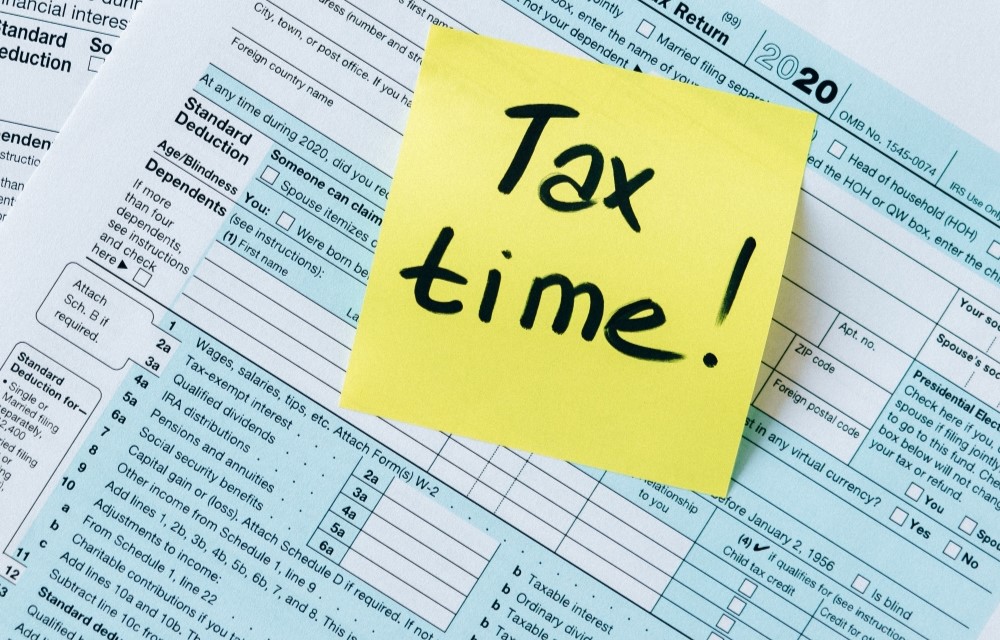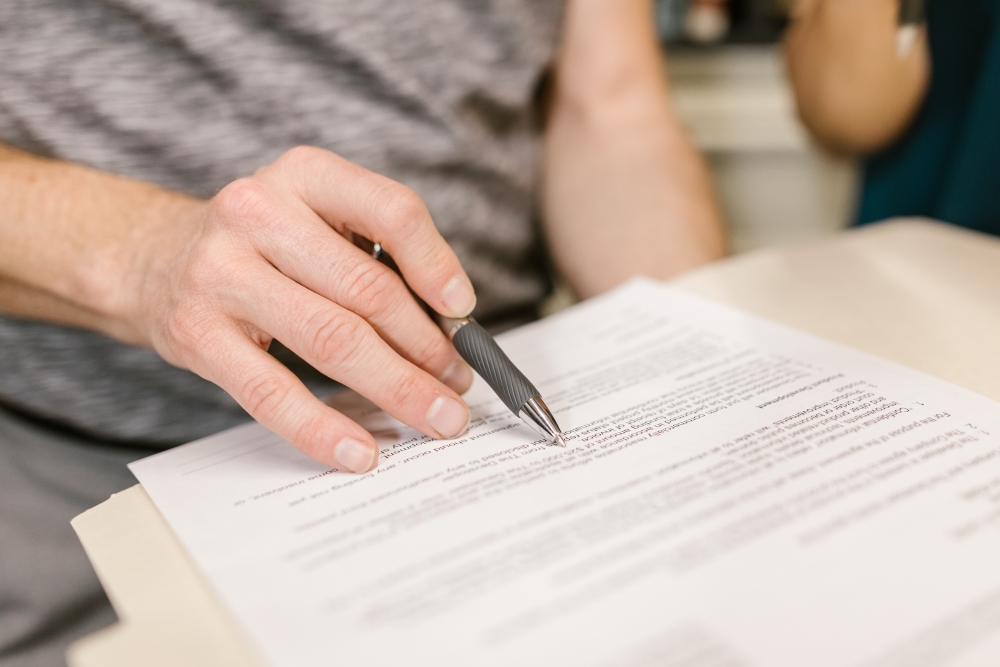Before entering into any insolvency proceedings, you must check your director’s loan account. In this article, we’re answering the question, how does a director’s loan work?
What is a director’s loan account?
A director’s loan account, or a DLA, is a record of transactions between the company and its directors. For example, when you borrow money from the company, the funds you draw will be allocated to a director’s loan account. Similarly, if a director lends money, they will create credit on the director’s loan account.
Most companies will have a director’s loan account, and the best way to deal with it is to remain in credit or at zero. So, how does a director’s loan work?
How does a director’s loan work?
Most directors introduce capital into a company when it is set up. This is how a director’s loan is created. When a director borrows money or takes earnings as loans from the business and then converts them to salary and dividends at a later date, they are using a DLA. An overdrawn director’s loan account isn’t necessarily a problem, provided the director can repay it or offset it within nine months of their company’s year-end. This is a large business expense and may not work for everyone.
This way of taking money from a limited company, when used correctly, can be tax efficient. However, if you enter into an insolvency procedure, it can leave you in a position where you owe the company money.
If you have to place your company into liquidation, the loan then becomes repayable to the company, and this is where the problem arises for directors’ loans. Additionally, you can find out more about personal liability for bounce back loans.
Many limited company directors choose to appoint an insolvency practitioner without checking their loan account first, which can be a costly mistake. The insolvency practitioner is duty-bound to recover the amount of the director’s loan in full. If you have assets such as investments or property, you must take advice on how best to protect these before you choose to appoint a liquidator.
Do not hope that the overdrawn director’s loan account will not be identified because it will be. You’re better off dealing with it head-on in the first instance when a director owes money to the company.
How do we assess a director’s loan?
We will look at the company’s last set of accounts and use this as a starting point. Then we will look at all the transactions from the date of the accounts up until now, totalling all the amounts paid from the company to the director. It’s important to keep a record of your self-assessment tax return and any corporation tax paid.
We then allocate any salary through the PAYE scheme, personal spending for the benefit of the company and any credits you have made back into the company personally. The director is then left with the final balance of the director’s loan over an accounting period.
If the loan is overdrawn, then the director owes the company money, and we will discuss how it is to be repaid. If the director’s loan is in credit, then the company owes the director money, and they will be treated like any other creditor. In the event that the insolvency practitioner recovers funds, then a dividend is paid out pro-rata to all of the company’s creditors.
When a director’s loan account is in credit, it’s important that you don’t repay it before you go into liquidation, as this could be classed as a preferential payment. Preference payments occur when a company director chooses to pay one creditor over another. For example, you repay a family member who lent you money over a supplier. This could land you in trouble and is best avoided.
An overdrawn director loan account is often recognised as an interest-free loan. As a result of this, you may find yourself having to pay off an S455 corporation tax bill on the difference of your loan balance. This will become apparent at a company’s year-end. Failing to comply could lead to corporation tax penalties and issues with personal tax avoidance.
What are your options if you have an overdrawn director’s loan account?
It’s an insolvency practitioner’s duty to recover money on behalf of the creditors’ interests. We advise all our clients to review the director’s loans in full before you appoint a liquidator. After reviewing, you should look to arrange a settlement before you go into liquidation. Both the director and insolvency practitioner will need to agree on how much the director repays and when.
An insolvency practitioner can make a commercial decision on how these funds are recovered. To discuss your situation in more detail, please get in touch for a confidential chat with one of our experienced team.
How will my director’s loan be dealt with?
There is a lot to consider when dealing with liquidation and company closure. If your business is insolvent, it can be hard to keep up with who needs paying and when. Find out the order of payments in liquidation. You might wonder, ‘How much of my overdrawn director’s loan account do I need to pay back?’ We’re here to help.
As with many of the other questions that we get asked, the answer to this one is – it depends. Directors’ loan accounts are dealt with on a case-by-case basis.
Let’s say you’ve got an overdrawn directors loan account. This means that you owe money to your company. You’ve entered liquidation, and your insolvency practitioner is now looking to recover that money from you. Here are three key things they are going to look at.
1. Does the insolvency practitioner have a right to act?
If you’ve got an overdrawn loan account, then yes, they do have a right to act. Alternatively, if they’ve reviewed your bank transactions upon entering liquidation and they can see you’ve taken too much money out of the company, then they also have a right to pursue you.
2. Has the company got a hope of recovery?
If you’re in rented accommodation with very little disposable income, there’s very little hope of recovery. On the other hand, if you’re sat there with a million-pound house, no mortgage and £300,000 in the bank, there’s a high probable chance of recovery.
3. What are the legal costs?
Let’s say you owe £10,000, £20,000 or £30,000. The legal costs associated with pursuing you through court to get that money back are going to be reasonably high. This may not always be in the best interest of the creditors. The insolvency practitioner will assess this and make a decision.
So, how much of my overdrawn director’s loan account do I need to pay back?
Well, there’s a sliding scale. For example, if you have substantial equity in your family home or buy-to-lets and you’ve got lots of money available in your personal accounts, it’s highly likely that you’ll have to pay back the vast majority of your loan.
You might be able to strike a deal with the insolvency practitioner because they probably don’t want to push you through the courts. Most insolvency practitioners prefer to get a deal done quickly, get the case off their desks and deliver some money back to the creditors.
The other side of the scale represents those in rented accommodation, with no realisable assets and no disposable income. In this case, it’s highly likely that your director’s loan account will be written off in full. Once again, an insolvency practitioner does not want to spend thousands of pounds chasing you through the court if there’s no hope of recovery. It would not be beneficial for them, but more importantly, it makes no sense in the interest of creditors either.
It isn’t possible to provide a definitive answer regarding how much of your DLA you’ll have to pay back, but we hope you have a better understanding.
What happens if you can’t repay a director’s loan?
If you can’t pay an overdrawn DLA, you may be offered a deal whereby the director pays it over a specified period of time. The insolvency practitioner’s role is to recover money owed to creditors, so you must be honest with them about any money that you owe. This means informing them about any income tax or corporation tax too.
What happens to an overdrawn director’s loan account in a member’s voluntary liquidation?
A member’s voluntary liquidation is used by companies that are solvent and, therefore, can afford to pay their debts when they fall due. In most cases, directors use this liquidation process due to not wanting to run the company anymore.
Any overdrawn director’s loan accounts discovered in a member’s voluntary liquidation will be dealt with in the same way as any other liquidation. If the account is in debt, the director will need to pay the money back when asked. If the account is in credit, the director will become a creditor and may receive some payment towards the end of the liquidation.
How to deal with an overdrawn director’s loan account
The truth is that it’s all down to your personal situation and your personal affordability. In most cases, if you have an overdrawn directors loan account, you will be able to settle it with the insolvency practitioner at a reduced rate.
The key is to get ahead of this, understand your director’s loan position before you appoint an insolvency practitioner and make sure you have that uncomfortable conversation with them upfront. Don’t leave it to chance or wait until they have been appointed because there’s less chance that you’ll get a favourable outcome.
We hope this blog has been useful and answered the question, how does a director’s loan work? Get advice today if you have an overdrawn director’s loan account or you think you might have one and need some help uncovering it. We’re always happy to offer honest advice on director’s loans and corporation tax.
Director’s Loan FAQs
What are the implications of a director’s loan?
An overdrawn director’s loan can have serious implications for you. You should ensure your insolvency practitioner has assessed the loan before you appoint them. Otherwise, it can be a nasty surprise down the line.
If you have an overdrawn director’s loan when closing the company, you will be personally liable for paying it back.
How does a director’s loan impact insolvency?
Similar to the above, the insolvency practitioner is duty-bound to recover the money you owe. If you have an overdrawn director’s loan, it can increase the chances of you becoming bankrupt. It’s important to have this checked before starting the liquidation process.
Are there any tax implications associated with director’s loans?
You may face tax implications on your director’s loan. You will usually have nine months to pay back the money. If you fail to pay the funds back in this time, you’ll be required to pay S455 tax which currently sits at 32.5%.
Please give us a call if you are worried about the tax implications of your director’s loan.
What should a director consider before taking a director’s loan?
It’s usually best to leave your account at zero or in credit – the company owes you money. However, it’s understandable that you want to take steps to help if there are financial difficulties. You need to consider how much you can reasonably afford to pay.
If you borrow more than you can afford to pay back, you will face cash flow problems, and it will be identified if you do have to liquidate. Bear in mind that an insolvency practitioner will assess your conduct for three years leading to the insolvency.
I'm Chris Worden, Managing Director at 1st Business Rescue. With over 7 years of experience, I help UK directors navigate the complex world of UK corporate insolvency. We offer free and independent advice to UK directors and advise them about what options may be available to them if their limited company starts to struggle.
I am passionate about helping other directors overcome their business challenges and get back on their feet, as I was once in the same position as them. I had a business that became insolvent, and the advice out there was confusing and overwhelming. I am here to provide honest and valuable advice to UK directors.
I am proud to say that we are one of the only 5-star corporate insolvency companies on Trustpilot with hundreds of 5-star reviews, and we publish videos weekly on our YouTube channel. Our channel is designed to educate UK directors about insolvency and debt advice. Check it out here:
Please get in touch and we’ll come back to you
without delay.
Call 0808 506 2246
Text 07717 738 167
Complete a Free Online Enquiry






